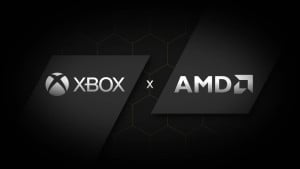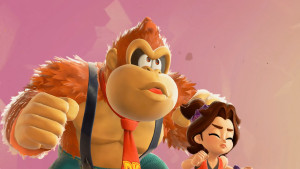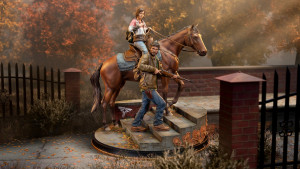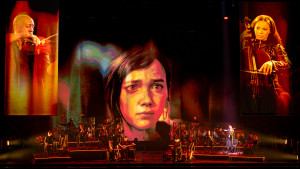The magazine is back. Get your subscription now!
Hands-On Review Impressions: Rockstar Beaterator
First off, I should note that I will not be giving Rockstar’s Beaterator a traditional review or assigning it a score. The reason for this is simple: We review games, and Beaterator is not a game. Though it is made for the PSP and sold on a UMD, Beaterator is actually a surprisingly deep and complex piece of music creation software, one that allows literally anyone to step in an easily create loops, beats, songs, or real-time mixes. It also might be one of the year’s most addictive PSP experiences.
Beaterator has been a pet project at Rockstar – a company as passionate about music as any in the business – for a long time. An early, Flash-based version of the game has actually been up on Rockstar’s site since 2005, but this new PSP version takes that template and expands it into a full-scale music studio tool for aspiring dance, hip-hop, and techno producers.
The most apparent forerunner to Beaterator is the MTV Music Generator series, which was released for PSone in 1999 and spawned two sequels on PS2. Both games use the basic template that users of programs like Fruity Loops and Apple’s Garage Band will find familiar: placing loops, samples, and melodies in blocks on a scrolling grid. However, a lot has changed since early in the decade, and in general Beaterator is far easier and more intuitive than any of the MTV titles.
One thing that’s immediately noticeable is how well the game scales for different types of users. You can interact with and enjoy Beaterator on an extremely shallow or extremely deep level. It’s all there for you to explore, but literally anyone with hands and ears will be able to boot the disc up and begin experimenting.
At the title screen, you have two options: Live Play and Studio modes. For novices, Live Play would be a great entry point into this title. Basically, it allows you to act as a live DJ, deploying loops, beats, and breaks in real time. You have eight tracks available to you (drums, vocals, lead, bass, etc.). Each of these is represented by a speaker that, when highlighted with the d-pad, displays the four PSP face buttons. By pressing them, you can switch between the four separate loops assigned to each track (these can be modified and substituted via the menu system). Hit a track, and you’re off. Individual loops keep repeating until you select another, allowing you to, for example, quickly juggle three synth parts while the drums keep pounding along. It’s extremely user-friendly, and definitely conveys the feeling of being a live DJ.
If you’ve started to work out some ideas in the Live Play mode, you can quickly switch to the Studio and start digging into the real meat of the game. Here, your tracks (which were placed on the speakers in Live Play) are displayed on a layout that looks a bit like traditional home studio software. In the Studio, you can make a live recording of the mix you were just performing.

However, the real rewards of Beaterator come in the Song Crafter, a mix composition mode that allows for a tremendous amount of creativity and depth. Here, you’ll see a grid with different lines assigned to each track. By placing blocks of drums, bass, keyboards, or other samples, you begin to build the basic outlines of your track. It’s really quite simple: Select a loop or sample and hit X. Don’t like it? Hit square to delete.
The basic samples work well, and the game seems to automatically understand how to make disparate samples fit together in a way that doesn’t disturb the groove. The sound samples are also where Rockstar’s partnership with hip-hop superproducer Timbaland pays dividends, allowing you to choose from 1300 original sounds he created specifically for the game. Include the samples created by Rockstar and the total number jumps to 3000.
There are scores of amazing samples and loops that span a wide range of genres, but if you are still looking for that perfect beat, Beaterator gives you the tools to go beyond mixing and begin creating your own original tracks. From drums to guitar, you can craft new beats and melodies with a system that’s not unlike the way you arrange tracks. For melodic instruments, you place notes on a grid where each line corresponds to a note on a keyboard. By dragging your notes out, you control sustain, phrasing, and slides up and down in pitch. Drums are even easier; it’s simply a matter of placing dots for each snare, hi-hat, kick, etc. on a metered grid.
I started out with a broad template (Breakbeat 1) that I had been playing with in Live Play, but quickly got into the game’s deeper features with ease. If you’re like me, you are probably allergic to demo videos and instructions, but every feature in the game is detailed with in-menu reference materials and well-done informational videos.
Still, nothing beats just getting in there and mucking about, which is what I did. Within about fifteen minutes, I’d come up with the broad sketches of my main groove, using mostly stock loops. As time went on, I ended up wanting something I wasn’t hearing in the beats and bass lines I was being given, so I cracked open the editors and programmed some original bass parts and supplementary drum tracks that were more to my liking. While I used mostly stock tones, you can also change the individual instrument sounds – the game even provides a genuine analog synth modeler that lets you tweak the various attack, wave, and oscillator knobs you’d find on keyboards like a vintage Moog.

Within about an hour, I had a track that – while no masterpiece – is at least a fairly groovy three-plus minutes of hectic techno. That is with very little previous experience with any computer recording or sequencing programs and only a cursory glance at most of the instructional materials. That’s an impressive testament to the fine job Rockstar Leeds did in creating this title’s interface. Without a keyboard and mouse, the developers have managed to come up with a UI that keeps a dizzying array of options at the user’s fingertips. In comparison to the sometimes clunky and cheap-sounding Guitar Hero studio, it’s a smooth and nearly headache-free experience from beginning to end.
You can also share your work with others, as the game allows you to export your track to a .wav file that’s saved on your Memory Stick Duo. From there, just pop it into a PC and you can import it into iTunes, convert to MP3, and start sharing it with your friends. Rockstar is also promoting this ability with the Beaterator Social Club, an online site that lets you upload a track directly from your PSP and share it with other Beaterator creators.
Music games like Guitar Hero and Rock Band have demonstrated just how passionate gamers are about music. Beaterator challenges us to stop miming our heroes and start creating our own tunes. For me, it’s a welcome new addition to the culture of gaming and music. As far as I was able to come in such a short time, I can’t wait to see what other (more talented) members of our community dream up with Beaterator.
Just to show what a novice with very little knowledge or skill can do with Beaterator, here’s an MP3 of the track I created while writing this article. It’s called “Amniotic Fluid.” I hope you enjoy it. If not, get Beaterator and do something better.
**Note: There are about 5 seconds of silence before the track starts, that is strictly user (my) error, not the fault of the game**
[View:http://media1.gameinformer.com/media/audio/AmnioticFluid.mp3:610:0]










